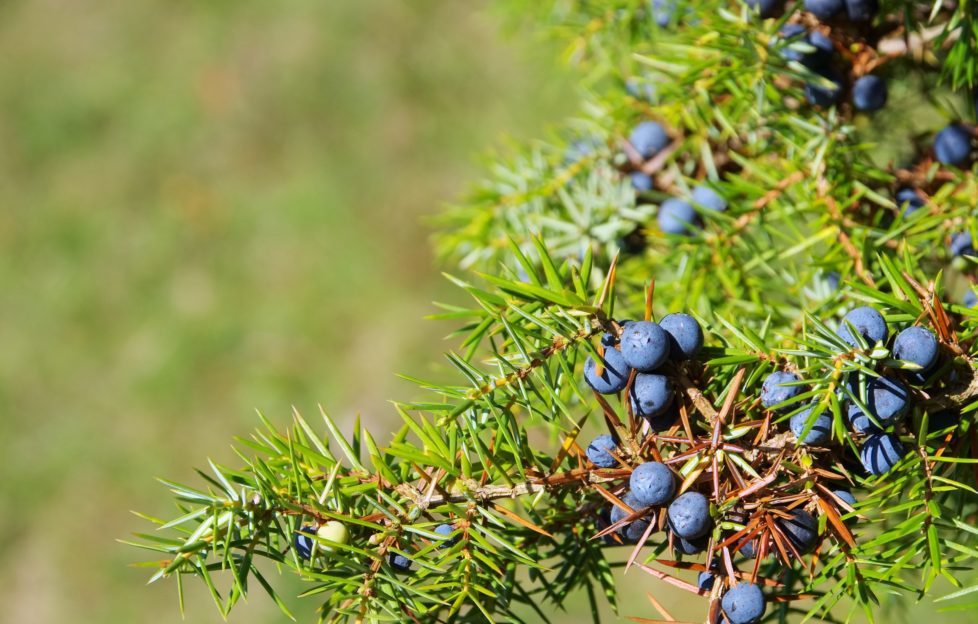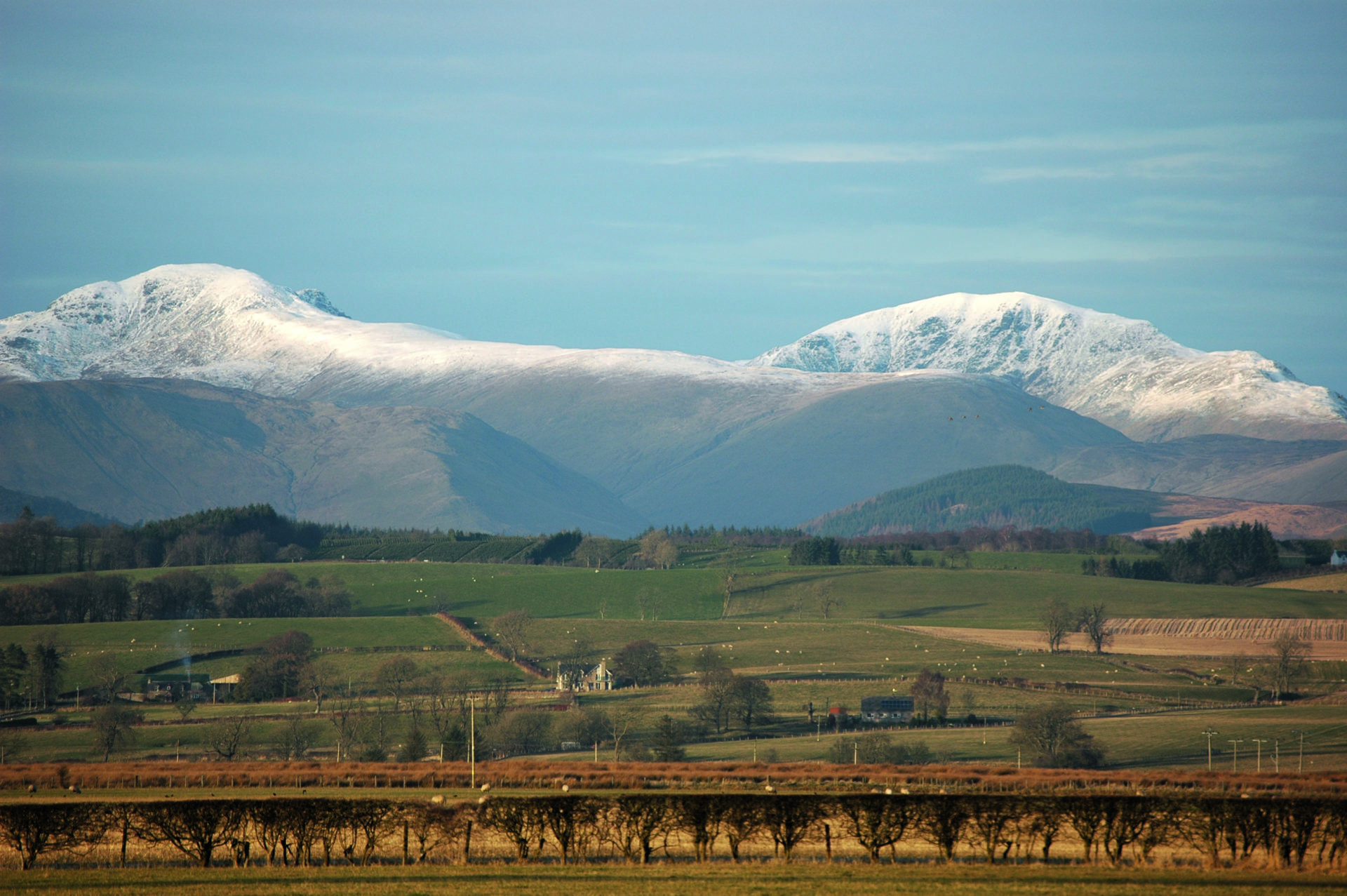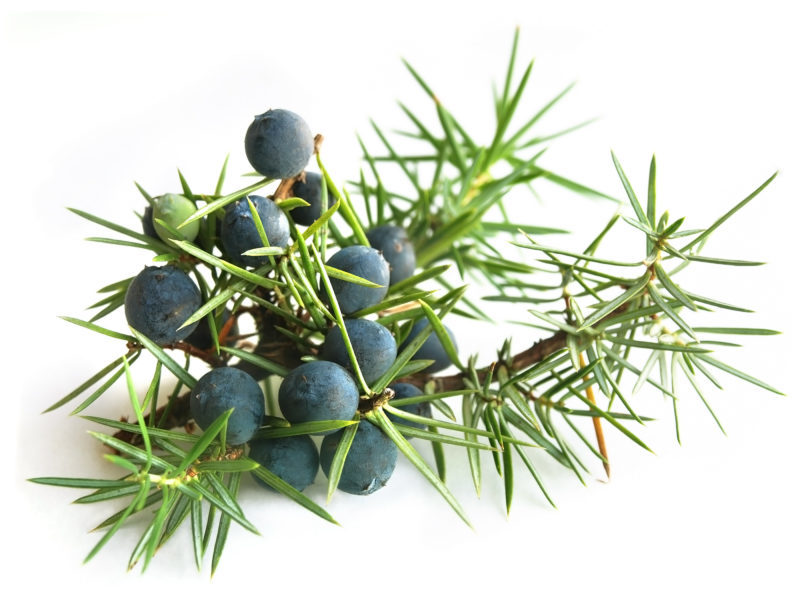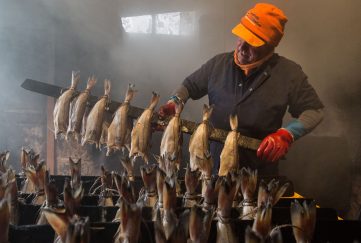Juniper, The Enduring Highlander


Jim Crumley
To the devestation of gin drinkers everywhere, Scottish juniper is at severe risk of dying out. From our archives, Jim Crumley pays homage to this mountaineer of shrubs…
The Gargunnock Hills appear on no-one’s list of the best high, wild places of Scotland.
They are not particularly high, nor particularly wild for that matter, but for half of my life they have been particularly handy, the destination for countless afternoon tramps, or leisured walks on long spring and summer evenings. And up here the view across the Carse of Stirling to the mountains of the southern Highlands is as good as anything in the West Highlands or the far north.

On the spoor of the glacier
It is also a good place to break in a new pair of boots, which is what I’ve been doing of late, wandering up through plantation woods and out onto the open hill that climbs in a series of terraces, the spoor of the glacier that shaped the carse.
Above the terraces are flattish, heathery, unsung summits wide open to every wind and huge skies. Among the terraces are short cliffs, and among the short cliffs are clusters of trees in rock faces, places steep enough to thwart sheep and deer. There are rowans, hawthorn, willow, birch… and juniper.
The juniper is a bit of surprise package up here and so far from big pinewoods like Rothiemurchus, which is where it grows best in Scotland, but juniper is one of those tribes of nature for which surprise is a way of life. It is also the only tree that grows in its natural state in America, Europe and Asia.
I was heading, in a desultory way, up towards the nearest summit, diverting among the cliffs and ledges to examine the trees, waterfalls, footprints in patches of mud, raptor pellets and fox droppings, the usual kind of things that entertain and slow the progress of a nature writer on the prowl.
The mountains unfold around you
And every now and then I stopped to throw my admiring glance far across the uncoiling Forth to the snowy pows of a mountainous arc that stretches from Ben Lomond in the west to Ben Chonzie in the east by way of Ben Ime, Ben Venue, Ben Ledi, Bean Each, Stuc a’ Chroin, Ben Vorlich, and distant glimpses of the second frontier of mountains beyond – the tips of Stob Binnein, Ben More, the Glen Lochay hills, Ben Lawers and its cohorts.
There was so much to see that I rather surprised myself when I reached the summit and stepped up into a suddenly reinvigorated north-west wind. And there, snug against absolutely nothing at all, and not ten yards from the top, was a solitary juniper bush. It was about four feet tall and four feet wide, and how it found sustenance and strength to survive – to thrive – on such a stance was not immediately obvious.
“This,” I told myself, “is what John Muir had in mind.” Muir was a fan of junipers. There is a passage in his book, My First Summer in the Sierra, that begins:
A still hardier mountaineer is the Sierra juniper, growing mostly on domes and ridges and glacial pavements. A thickset, sturdy, picturesque highlander, seemingly content to live for more than a score of centuries on sunshine and snow; a truly wonderful fellow, dogged endurance expressed in every feature, lasting about as long as the granite he stands on – some are nearly as broad as high. I saw one on the shore of the lake nearly ten feet in diameter – surely the most enduring of all tree mountaineers, it never seems to die a natural death, or even to fall after it has been killed. If protected from accidents, it would perhaps be immortal…
Muir’s “Sierra juniper” would have been the western juniper, a bit more tree-like than the common juniper of Scottish hills or its cousin in the pinewoods where it gathers beneath the pines’ big limbs in hundreds of ragged patches like an eerie green ground mist, the illusion heightened on days when they glitter with thousands of dew-hung spider webs.
Muir’s junipers have been photographed to spellbinding effect by the great Ansel Adams, posing in settings that catch your heart, rooted on the summits of rock pillars. Muir, Adams, juniper… a trinity of immortals.
My Gargunnock Hills shrub does not evoke immortality so much as incredulity. The bird or wind or fox or whatever other means of accidental transport delivered its seed here a long time ago (it’s among the slowest of slow growers) would not have given much for its chances, but it is surely the very careless nature of its dispersal across the toughest of landscapes that has evolved the juniper to make the most of the meagrest of resources on open hills and mountains. It grows in two subspecies in Scotland – this more upright one, and another prostrate one that clambers up to the 1000 metre contour in places like Beinn Eighe in Wester Ross.
A survival action plan
Immortality in Scottish junipers is, alas, compromised by deer, rabbits, and muirburning among other things, and our oldest we know of was 225 years, but that doesn’t mean that there may be a few out there that are much older. And as there is a government biodiversity action plan on behalf of our junipers in place, that should increase the chances of more trees living longer.
Besides, juniper has some very important friends. It is the nesting tree of preference for goldcrest, it is a winter favourite of black grouse, and birds like fieldfare and ring ousel eat its berries and help to spread its range by discarding the seeds.
Now if we could introduce a few European brown bears, that too would help the juniper’s cause, for the brown bear is a past master in the art of distributing seeds. But that’s probably not going to happen in the Gargunnock Hills.
I reached for Muir again:
I saw some that had withstood an avalanche from snowy Mount Hoffman cheerily putting out new branches… Some were simply standing on the pavement where no fissure more than half an inch wide offered a hold for its roots. Those ten feet in diameter must be very old – thousands of years. Wish I could live, like these junipers, on sunshine and snow, and stand beside them on the shore of Lake Tenaya for a thousand years. How much I should see, and how delightful it would be! Everything in the mountains would find me and come to me, and everything from the heavens like light.
Muir in that kind of mood is irresistible, and though he may exaggerate here and there to make a point, it is beautifully made and nothing disguises its essential truth. Stoicism in nature is eternal. Muir was writing for his own time of course, and responding to circumstances as he found them. But he was, of all things, a visionary, and the fact that his ideals are perhaps more difficult to adhere to now than they were then should not dissuade us.
There is a nature writer’s poetic sensibility in him too, which his detractors denounce and which his admirers embrace. I stand among those who embrace. It is, for example, a nature writer’s rather than a naturalist’s response to the age and repose of the junipers to wish he could live on sunshine and snow and stand with them for a thousand years, but in the next breath it is the naturalist talking: “everything in the mountains would find me and come to me…”
There is no substitute in the life of the naturalist or the nature writer (not always the same thing then!) for time spent in stillness and allowing nature to come to you. Chance encounter and luck are a small part of acquiring knowledge of nature, but getting to know your chosen landscape and being still in the right place is how you win the intimate insights and learn the secrets that underpin everything.
I sat a little distance away from the hilltop juniper on the Gargunnock Hills, and wondered how old it is. Hugh Johnson of the Royal Horticultural Society in his book Trees records that western juniper in the Rocky Mountains takes 300 years to reach 30 feet which doesn’t help me much except to reinforce my own rule of thumb that juniper is usually older than it looks.
A true mountaineer of plants
This one, a thousand feet up on a north-facing escarpment and unprotect from all winds other than a south wind (a rare visitor hereabouts), is destined to live a lowlier, more tortured existence than what are probably its parent trees a couple of hundred yards away and a hundred feet lower down, and dug into one of those small cliffs, where over perhaps the last fifty to a hundred years they have soared to a height of ten feet.
I crossed the summit of the hill to look at the juniper close up, and discovered that it has a visitor from time to time. There are fox droppings on its most exposed side, and on its most sheltered side (shelter in this case being a relative term), there is a patch of flattened vegetation where an animal such as a fox that likes to snooze in a tight curve with its tail draped over its muzzle could while away an agreeable hour while the juniper bore the brunt of one more hill blizzard on a stinging north-westerly.
blizzard on a stinging north-westerly.
So I am coming back one day soon when there is a west wind and good light and I will sit up there for a few hours and see if I can persuade the juniper to cough up some of its secrets, and see too if I can borrow from its monumental capacity for stillness.





